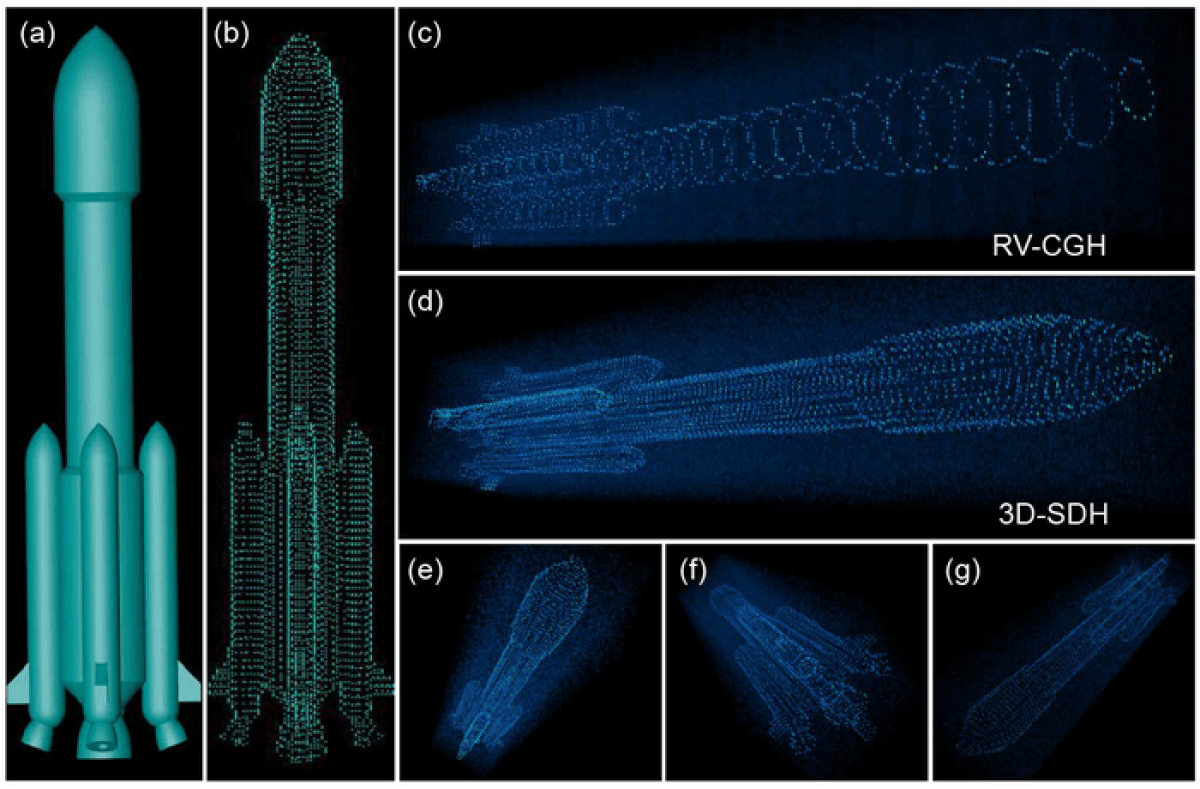 By Study Finds
By Study Finds
The next generation of 3D virtual reality is on the horizon, a new study explains. By packing more details into a 3D image, researchers have developed a new way to create dynamic ultrahigh-density 3D holograms. The update could boost VR and other applications by enabling even more realistic representations of the world around us.
“A 3D hologram can present real 3D scenes with continuous and fine features,” says Lei Gong, who led a research team from the University of Science and Technology of China, in a media release. “For virtual reality, our method could be used with headset-based holographic displays to greatly improve the viewing angles, which would enhance the 3D viewing experience. It could also provide better 3D visuals without requiring a headset.”
Producing realistic-looking holograms requires projecting images with a high pixel resolution onto a large number of successive layers that scientists spaced closely together. Doing this achieves high-depth resolution, which is vital in making the hologram look three-dimensional.
Creating a hologram typically involves using a spatial light modulator (SLM) to modulate the intensity or phase of a light beam. Overhead projectors use spatial light modulators to project content from a computer to a surface. However, today’s holograms are limited in terms of quality because current SLM technology allows only a few low-resolution images to be projected onto separate levels with low-depth resolution.
To fix this problem, the researchers combined an SLM with a diffuser. This allowed multiple image levels to be separated by a much smaller amount. It also suppressed any unwanted transfer of signals between communication channels, which helped create the ultrahigh-density 3D holographic projection.
 The new 3D scattering-assisted dynamic holography approach creates a digital hologram by projecting high-resolution images onto planes spaced closely together (a), achieving a more realistic representation than conventional holography techniques (b). CREDIT: Lei Gong, University of Science and Technology of China
The new 3D scattering-assisted dynamic holography approach creates a digital hologram by projecting high-resolution images onto planes spaced closely together (a), achieving a more realistic representation than conventional holography techniques (b). CREDIT: Lei Gong, University of Science and Technology of China
The new technique is called three-dimensional scattering-assisted dynamic holography (3D-SDH). By testing their method, the team was able to project a 3D rocket model with 125 successive image levels at a depth interval of 0.96 mm in a single 1000×1000-pixel hologram.
Other recently developed approaches only were able to project the 3D model with 32 image levels with a depth interval of 3.75 mm.

They then built a prototype 3D-SDH projector to create dynamic 3D projections and compared the results with conventional state-of-the-art hologram technology currently used. The researchers found that the resolution from the 3D-SDH was 1000 times better than the older model.
“Our new method overcomes two long-existing bottlenecks in current digital holographic techniques — low axial resolution and high interplane crosstalk — that prevent fine depth control of the hologram and thus limit the quality of the 3D display,” Gong concludes. “Our approach could also improve holography-based optical encryption by allowing more data to be encrypted in the hologram.”
The study is published in the journal Optica.
South West News Service writer Alice Clifford contributed to this report.
Source: Study Finds
Study Finds sets out to find new research that speaks to mass audiences — without all the scientific jargon. Study Finds has been writing and publishing articles since 2016.
Top image caption/credit: Researchers have developed a new way to achieve dynamic projection of 3D objects onto ultrahigh-density successive planes. By packing more details into a 3D image, this approach could enable realistic representations for use in virtual reality and other applications. CREDIT: Lei Gong, University of Science and Technology of China
Become a Patron!
Or support us at SubscribeStar
Donate cryptocurrency HERE
Subscribe to Activist Post for truth, peace, and freedom news. Follow us on SoMee, Telegram, HIVE, Flote, Minds, MeWe, Twitter, Gab, What Really Happened and GETTR.
Provide, Protect and Profit from what’s coming! Get a free issue of Counter Markets today.

Be the first to comment on "Next Generation of 3D Virtual Reality is Here and Won’t Require a Headset"